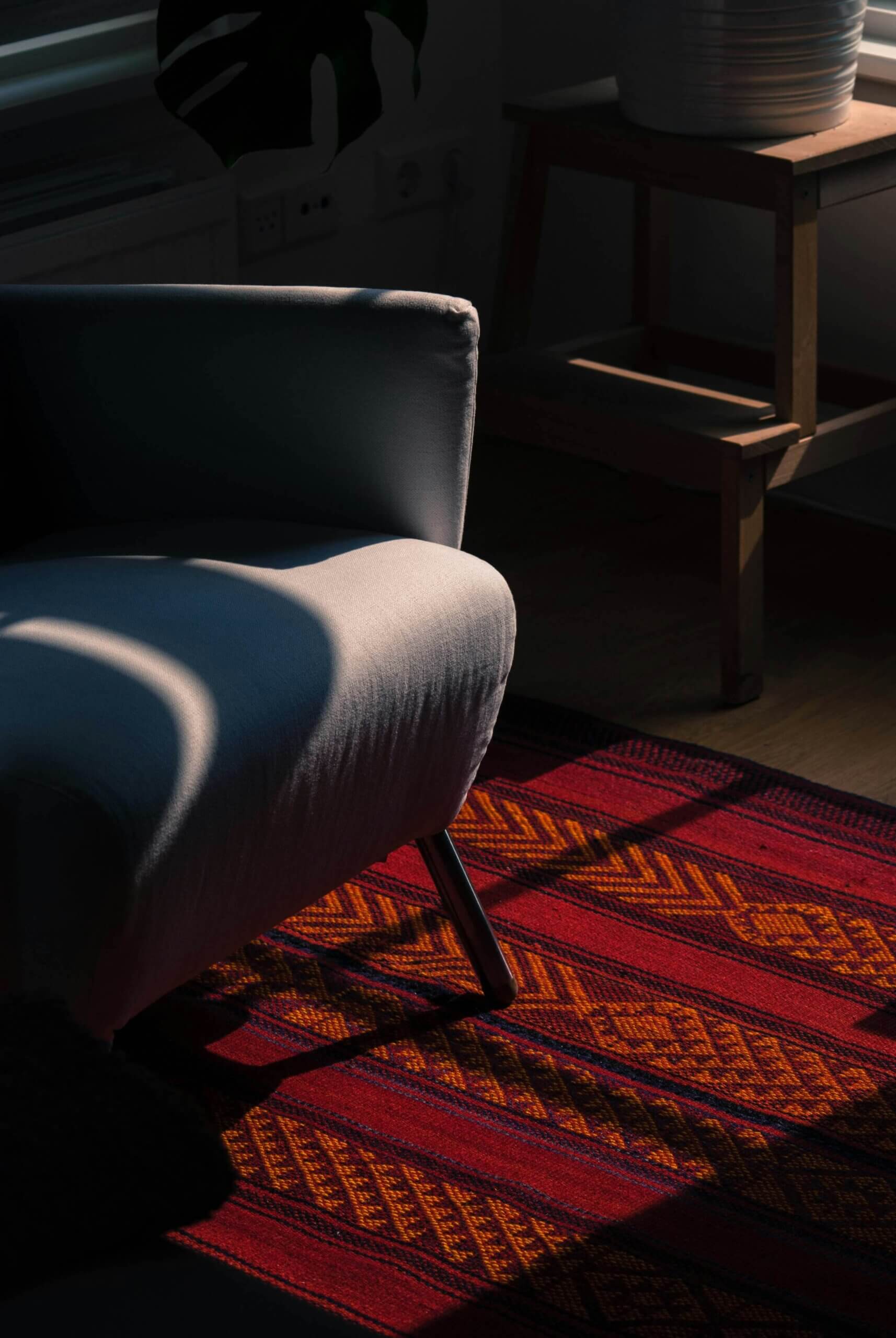When urine soaks into carpet fibers, removing the odor becomes more complex than simply cleaning the surface. To understand why some cleaning methods work better than others, we need to explore what happens when urine comes into contact with carpet and how different cleaning approaches address the underlying chemistry.
The Chemistry of Urine Odors
When fresh urine contacts carpet fibers, it starts as a mildly acidic solution containing urea, urochrome (which gives urine its color), and various organic waste compounds. Over time, which creates that characteristic sharp smell. The urine undergoes further chemical changes which binds to carpet fibers. In addition to binding, if enough urine is applied to the carpet, or if the pet continues to urinate at that same spot, the urine will penetrate into the carpet padding.
Different species urine presents unique challenges. Cat urine contains particularly high concentrations of felinine, which breaks down into intensely pungent sulfur-containing compounds. Dog urine tends to be more alkaline and contains higher concentrations of hormones and marking pheromones. Human urine typically has lower concentrations of these marking compounds but can still create persistent odors if not properly treated.
Why Basic Carpet Cleaning Often Falls Short
Standard carpet cleaning methods, including steam cleaning and traditional shampooing, may temporarily reduce urine odors but frequently fail to eliminate them completely. This happens for several reasons:
Water-based cleaning methods can actually reactivate dried urine crystals, temporarily intensifying the smell. Additionally, if the cleaning solution doesn’t fully penetrate to the same depth as the urine, you’re only addressing part of the problem. The padding beneath the carpet often harbors a reservoir of contamination that standard cleaning can’t reach.
Effective Solutions for Urine Odor Removal
To successfully eliminate urine odors, you need a multi-faceted approach:
First, locate all affected areas using a UV light, as urine often spreads further than visible staining suggests. Then apply an enzymatic cleaner specifically designed for breaking down urine proteins and compounds. These biological cleaners contain specialized enzymes that break the urine compounds down into smaller molecules that can be more easily removed.
For severe cases, especially those involving pet urine, you may need to:
- Pull back the carpet to inspect and potentially replace the padding
- Treat both sides of the carpet with enzymatic cleaner
- Clean or seal the sub-floor if contamination has penetrated that deeply
Prevention and Long-term Solutions
The most effective approach combines thorough cleaning with preventive measures. Consider applying carpet sealants after cleaning to prevent future accidents from penetrating as deeply. For homes with pets, maintain regular cleaning schedules and address accidents immediately before they can set into the fibers.
Professional vs. DIY Cleaning for Removing Urine Smell
While do-it-yourself cleaning can be effective for recent or minor incidents, professional cleaning services have several advantages for serious urine odor problems. They have access to:
- Commercial-grade extraction equipment that provides deeper cleaning
- Professional-strength enzymatic cleaners
- Moisture detection tools to ensure thorough drying
- Experience in identifying and treating contamination in padding and sub-floors
The Bottom Line
Professional carpet cleaning will indeed remove urine smell, but success depends on:
- How long the urine has been present
- The depth of penetration into carpet and padding
- The cleaning methods and products used
- Whether the padding and sub-floor are also addressed
For best results, combine professional cleaning with enzymatic treatments and be prepared to replace padding or treat sub-floors in severe cases. Remember that addressing urine odors quickly prevents them from becoming more difficult to remove later.


